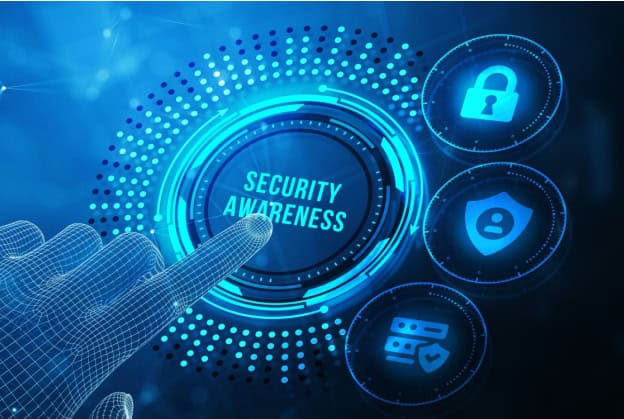Human error has become a leading cause of cybersecurity breaches, with 73% of breaches in 2023 linked to phishing and pre-texting. Cybercriminals are increasingly exploiting the human element within organizations, as evidenced by the massive MGM breach in 2023, which began with a simple phishing phone call and resulted in millions of dollars in damages and significant downtime. This growing trend highlights the critical need for organizations to address “human risk,” the potential for user errors—whether intentional or accidental—that can lead to severe cybersecurity incidents.
As organizations adopt more web-based applications and hybrid work models, the risk associated with human error is increasing. Security awareness training is now a vital tool necessary in mitigating this risk by educating employees on how to recognize and respond to threats like phishing. Yet, for training to be effective, it must move beyond basic compliance exercises and be integrated into a broader human risk management strategy. By fostering a culture of security and changing employee behaviors, organizations can significantly reduce the likelihood of breaches caused by human error.
The Role of Security Awareness Training in Reducing Human Risk
Leveraging security awareness training is crucial in combating the rising threat of human risk in cybersecurity. With phishing and credential theft being among the most prevalent tactics used by cybercriminals, organizations must empower their employees to act as the first line of defense. Security awareness training achieves this by equipping employees with the knowledge and skills to recognize and respond to various threats, such as phishing emails and social engineering attempts, which often act as entry points for more advanced and damaging attacks. For example, a well-trained employee is less likely to fall victim to a phishing scam, which can prevent the initial access that cybercriminals need to infiltrate a network.
The effectiveness of security awareness training hinges on its ability to change behavior and foster a security-conscious culture within the organization. It’s not enough to simply present information; training must be engaging, relevant, and ongoing. This means incorporating phishing simulations, interactive content, and regular updates that reflect the latest threats and trends in cybersecurity. By doing so, organizations can ensure that their employees remain vigilant and prepared to defend against evolving cyber threats. Ultimately, when security awareness training is done right, it not only reduces the likelihood of human error leading to a breach but also instills a proactive mindset that can significantly strengthen an organization’s overall security posture.
Best Practices and Enhancing Effectiveness for Security Awareness Training
To maximize the impact of security awareness training, it’s essential to tailor the program to the specific needs and roles within the organization. Different departments and job functions face unique cybersecurity challenges, and a one-size-fits-all approach to training may not adequately address these diverse risks. Employees in finance or HR may be more targeted by phishing attempts aimed at accessing sensitive financial data or personal information, while IT staff need to be vigilant about threats related to system access and data integrity. By customizing training content to reflect these specific risks, organizations can ensure that each employee is better prepared to handle the threats they are most likely to encounter.
Effective security awareness training should also be an ongoing process, not a one-time event. Cyber threats are constantly evolving, and so must the training that employees receive. Incorporating real-world scenarios and simulations allows employees to practice their responses in a safe environment, making them more confident and capable in the face of actual threats.
To fully leverage security awareness training in mitigating human risk, it’s essential to adopt a holistic approach that integrates training with broader organizational strategies, measures its effectiveness, and fosters a strong security culture. Here are key strategies to consider:
- Track Key Performance Indicators (KPIs):
-
- Monitoring KPIs such as phishing simulation success rates, incident reports, and employee participation helps measure the effectiveness of the training program. Tracking these metrics allows organizations to identify areas for improvement and demonstrate the impact of training on reducing human risk.
- Integrate Training with Broader Security Initiatives:
-
- Security awareness training should align with the organization’s overall cybersecurity strategy, supporting initiatives like incident response, access control, and identity management. Integrating training with broader security measures ensures that employees understand how their actions fit into the larger security framework, making the training more impactful.
- Embed Security into Organizational Culture:
-
- Creating a culture where security is a shared responsibility involves consistent messaging from leadership and embedding security practices into everyday workflows. When security becomes part of the organizational DNA, employees are more likely to internalize training concepts and apply them consistently.
- Reinforce Positive Security Behaviors:
-
- Recognizing and rewarding employees who demonstrate good security practices can reinforce positive behavior and encourage others to follow suit. This approach not only boosts morale but also turns security awareness into a proactive, peer-supported effort across the organization.
- Ensure Training Adaptability and Relevance:
-
- Regularly updating training content to reflect new threats and tailoring it to specific roles within the organization keeps the training relevant and engaging. Adaptable training ensures that employees are always prepared for the latest risks, maintaining a high level of vigilance and reducing the likelihood of human error.
Addressing human risk through effective security awareness training is not just a necessity—it’s a strategic imperative. By integrating training with broader security initiatives, fostering a culture of shared responsibility, and continuously adapting to emerging threats, organizations can significantly reduce the likelihood of breaches caused by human error. A proactive and well-rounded approach to security awareness is key to safeguarding against the constantly shifting tactics of cybercriminals.




